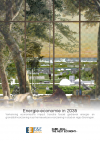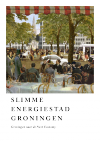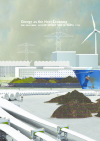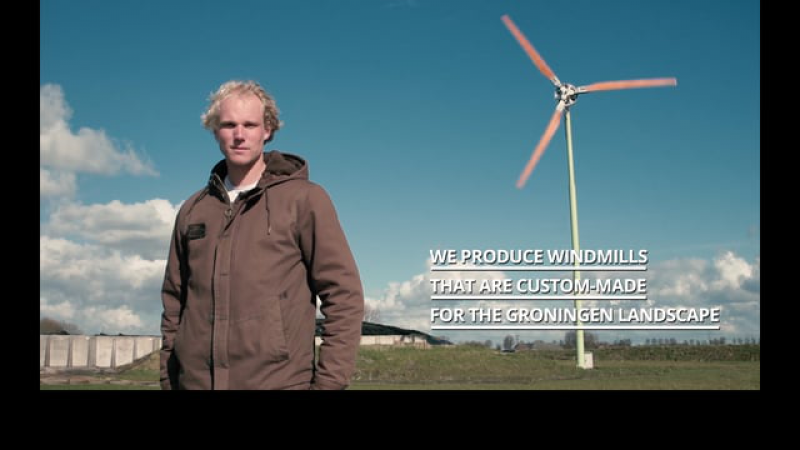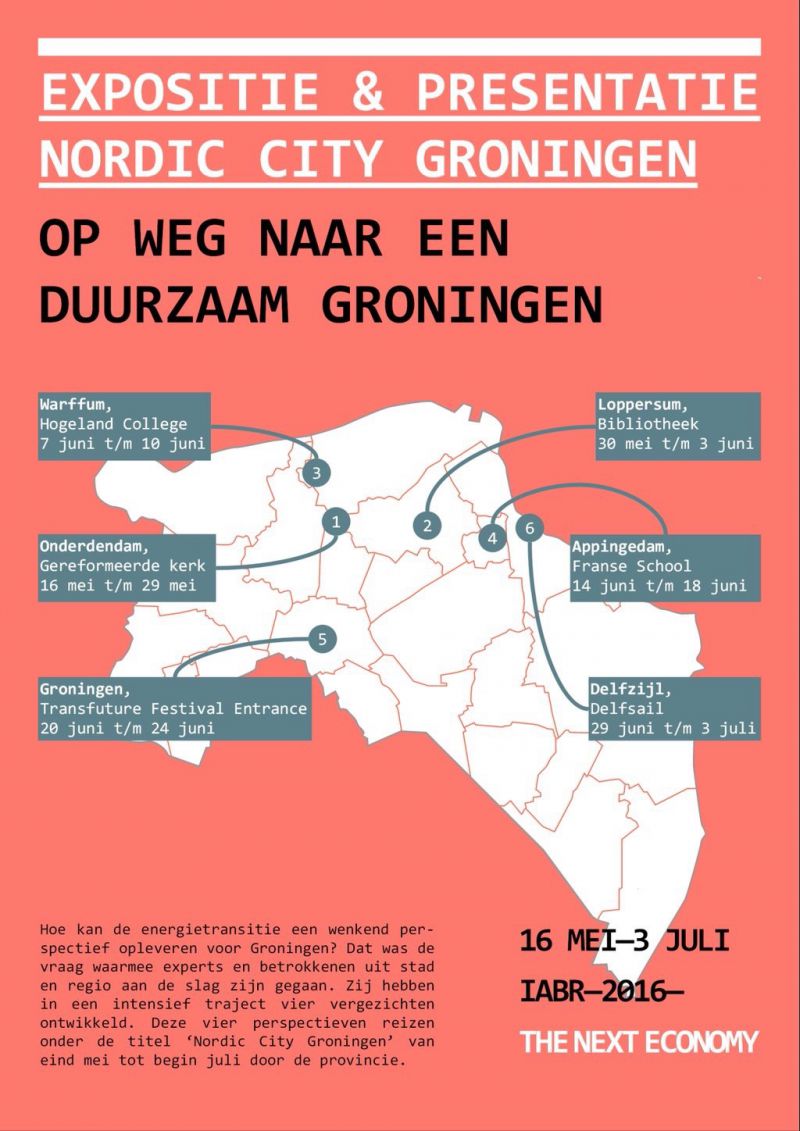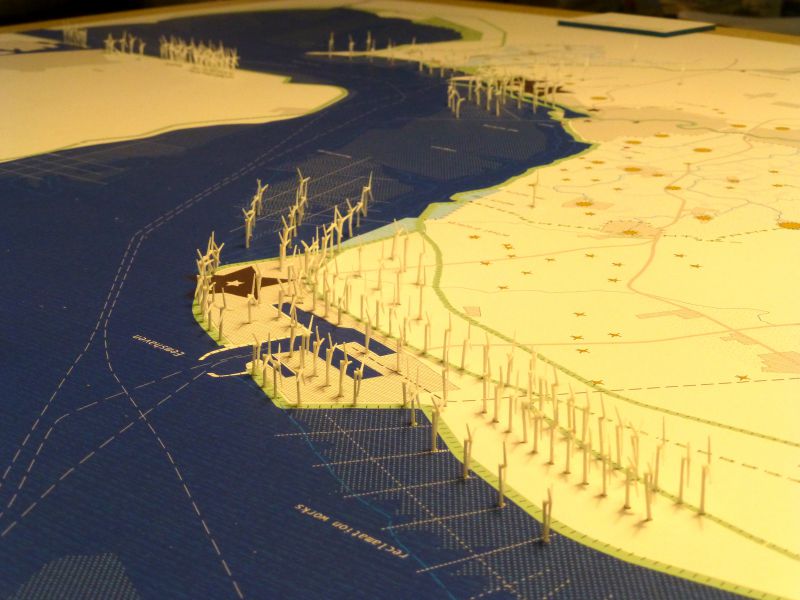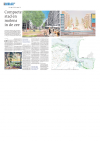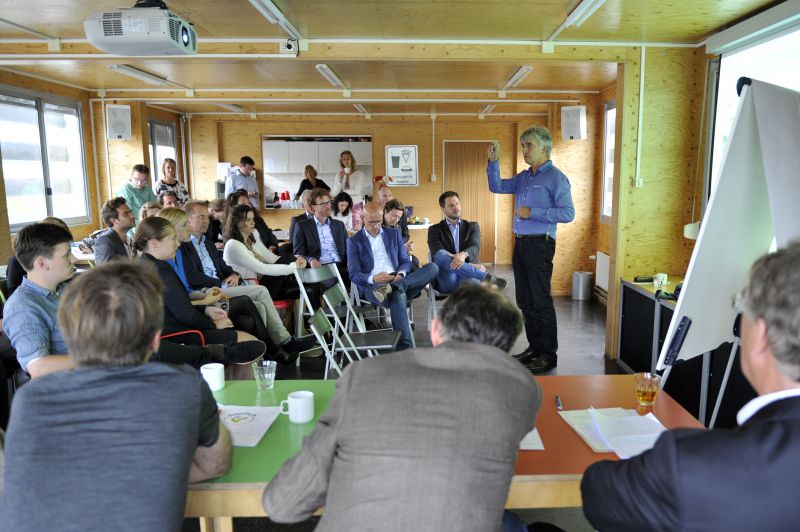
image: van Paridon x de Groot
The opportunities of the energy transition
How can the transition from fossil to renewable energy be a driving force for the economic and spatial development of the city and region of Groningen? And what are the next steps in bringing the development perspectives towards implementation? IABR–Atelier Groningen presents the opportunities for economic and spatial development that present themselves when city and region act on the energy transition. Four spatial design proposals are developed: Energy Port, Biobased Economy for the North, Groningen Smart Energy City and Sustainable and Safe Villages.
The perspectives are based on an exploration of the economic opportunities the transition to renewable energy in 2035 can produce and show a future for Groningen as a coherent urban region with a strong relations between the capital city and the surrounding villages and ready for the Next Economy: the Nordic City.
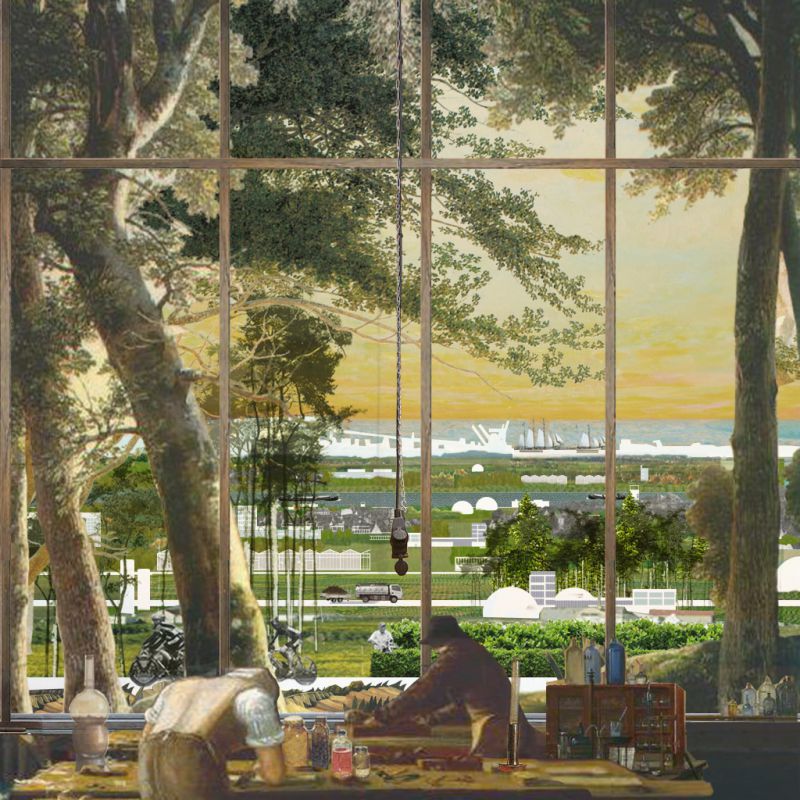
image: Maat ontwerpers
The Nordic City
Nordic City tells a story about a future that is both viable and desirable and can actually become a reality. This story puts a firm spin on the image of Groningen by highlighting the opportunities of a region that is now mostly known for its struggle with persistent problems like earthquake damage and demographic and economic shrinkage. It is a story that can rekindle the confidence necessary to draw investments to the region, to realize the energy transition, to repair the earthquake damage and turn lost ground into a head start. Nordic City comprises proposals that are ready for implementation as well as far-reaching concepts that will take a little more time. Rather than being visionary, the story paves the way for new projects and encourages policy- and decision making. It shows that city and region can take a leading role if all parties and stakeholders involved are serious about the energy transition.
Economic opportunities and spatial quality
In the wider context, the energy region of Groningen clearly stands out. With its extensive energy-based knowledge infrastructure and logistic hub and landing point for power and data in the Eemshaven sea port, the region can develop into an energy hub that serves a large area.The economic effect of the energy transition becomes substantial when we take the connections into account that the energy sector can make with other strong urban and regional economic sectors: agriculture, chemistry, knowledge institutes, ICT, and construction.

image: van Paridon x de Groot
By approaching the energy transition in conjunction with other spatial challenges, such as the decline in population, the quality of the Groningen landscape can be strengthened.Atelier Groningen shows that the energy transition will greatly influence residential environments, but that the integration of the corres- ponding provisions and networks can preserve and reinforce their quality if plans are implemented carefully in collaboration with the parties involved and designed with a sense of location, material, and detail.
Spatial design proposals
Four promising clusters appear when the energy transition is coupled with economic development and spatial quality. The clusters bundle the economic activities that will ensure that the energy transition will take root in the city and the region of Groningen.
Four spatial design proposals elaborate the perspective that the energy transition can offer the Groningen Region:
Energy Port: prospect for Eemshaven: center for offshore wind, biomass supply, buffering, and energy distribution.
Biobased Economy for the North: prospect for Delfzijl as
a ‘green’ industrial complex and the center of the biobased activity in the region.
Groningen Smart Energy City: prospect for the
Smart Energy City: the Ringstraat as a new urban environment.
Sustainable and Safe Villages: prospect for a Sustainable and
Safe Onderdendam: reparation, reinforcement and greening of homes.
The results of Atelier Groningen are elaborated in the brochure 'The Nordic City' which can be downloaded here.
Project Atelier Groningen is a collaboration of the IABR and an alliance of the Province of Groningen, the Municipality of Groningen, Eemsdelta Region and the Groningen-Assen Region. The atelier master is Jandirk Hoekstra (H+N+S Landscape Architects).
The research and design research has been done by the offices E&E Advies, Quintel Intelligence, van Paridon x de Groot (in collaboration with LINT), Maat Ontwerpers, the Atelier of the Chief Architect of the Municipality of Groningen (MD Landscape Architects, Specht Architects, Studio MARCHA!) and H+N+S Landscape Architects.
The IABR initiates and produces the Project Ateliers as a lead partner for the Regional and Local Design Dialogue Program, within the framework of the Ministry of Infrastructure and the Environment’s Action Agenda for Architecture and Spatial Design 2013–2016.



